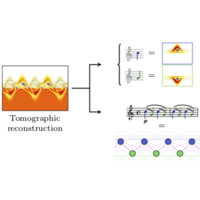Researchers at Stanford University have developed a quantum version of Archimedes’ screw that, instead of water, hauls fragile collections of gas atoms to higher and higher energy states without collapsing.
Most nonequilibrium, many-particle systems eventually reach a thermal state. However, some one-dimensional quantum systems do not thermalize, although they may settle into a long-term equilibrium state.
Along the way, the researchers also observed the development of scar states which are extremely rare trajectories of particles in an otherwise chaotic quantum system in which the particles repeatedly retrace their steps like tracks overlapping in the woods. Scar states are of particular interest because they may offer a protected refuge for information encoded in a quantum system. The existence of scar states within a quantum system with many interacting particles (a quantum many-body system) has only recently been confirmed.
The Stanford experiment is the first example of the scar state in a many-body quantum gas and only the second ever real-world sighting of the phenomenon.
The team explored what would happen if they tweaked a very unusual many-body experimental system, called a super Tonks-Girardeau gas. These are highly excited one-dimensional quantum gases—atoms in a gaseous state that are confined to a single line of movement—that have been tuned in such a way that their atoms develop extremely strong attractive forces to one another. What’s super about them is that, even under extreme forces, they theoretically should not collapse into a ball-like mass (like normal attractive gases will). However, in practice, they do collapse because of experimental imperfections.
The physics of quantum many-body systems out of equilibrium remain consistently surprising. (Phys.org)
Their work has been published in Science.
The post New state of matter in one-dimensional quantum gas appeared first on Swiss Quantum Hub.



